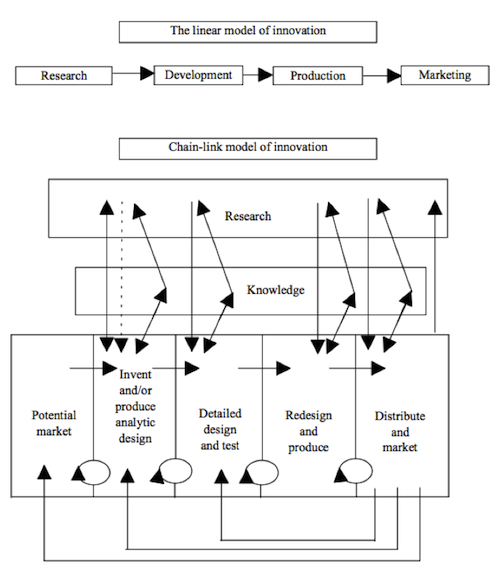We know that today we are living in the age of the so-called knowledge economy. This is a natural shift from the (previous) industrial economy that ruled our world before terms like microprocessors, dot.com and Facebook were born.
So today the knowledge economy is all about innovation… and in the realm of enterprises that means two things:
Knowledge – inside “learning organisations”
“Firms must become learning organisations, continuously adapting management and skills to accommodate to new technologies. They will be increasingly connected via networks, where interactive learning involving creators, producers and users in experimentation and exchange of information drives innovation.”
Collaboration –
“A knowledge economy is, in effect, a hierarchy of networks, driven by the acceleration of the rate of change and the rate of learning, where the opportunity and capability to get access to and join knowledge-intensive and learning-intensive relations determines the socio-economic position of individuals and firms.”
(Source: The Knowledge-based Economy, Organization For Economy Co-operation and Development, 1996)
Here is a visual representation of the same ideas:
These are important factors but we should also keep in mind the most important one – the human factor. By 2018, “digital natives” will transform the workplace. The use of IT will intensify in financial institutions as well as education and media companies that wish to stay competitive.
… and this is where video becomes vital.
Communication – “webcams will become the new pens”
For younger workers, video is a part of their way of life: playing video games and using YouTube. As young adults, they tend to record a video version of their CVs and once they get hired they will be comfortable creating video memos and video pitches. I strongly suggest to you that webcams will become the new pens and organisations will need a solution to manage this content and make it available internally and externally.
Remote Learning –
Today there are more students than ever before; by contrast, there are fewer teachers and fewer classrooms. Technology is helping bridge this gap by offering low-cost, open-source solutions like lecture capturing, live streaming and video presentations. The students of today are the workforce of tomorrow and for them video in learning is becoming ubiquitous. In order to distribute knowledge and keep costs low, large organisations need to adapt remote learning tools as well.
What does this mean for the CIO?
The democratisation of IT isn’t a trend – it’s a reality. Just take a look at the three year-old toddlers that are already using touchscreens. Can you imagine what they will expect from technology by the time they start their first job?
A lot, no doubt…
Those CIOs who choose to drive video adoption in order to enhance enterprise collaboration and communication will be at the forefront of the knowledge economy; those that don’t will lag behind.
This essay was originally published in Computer Weekly Open Source Inside.
